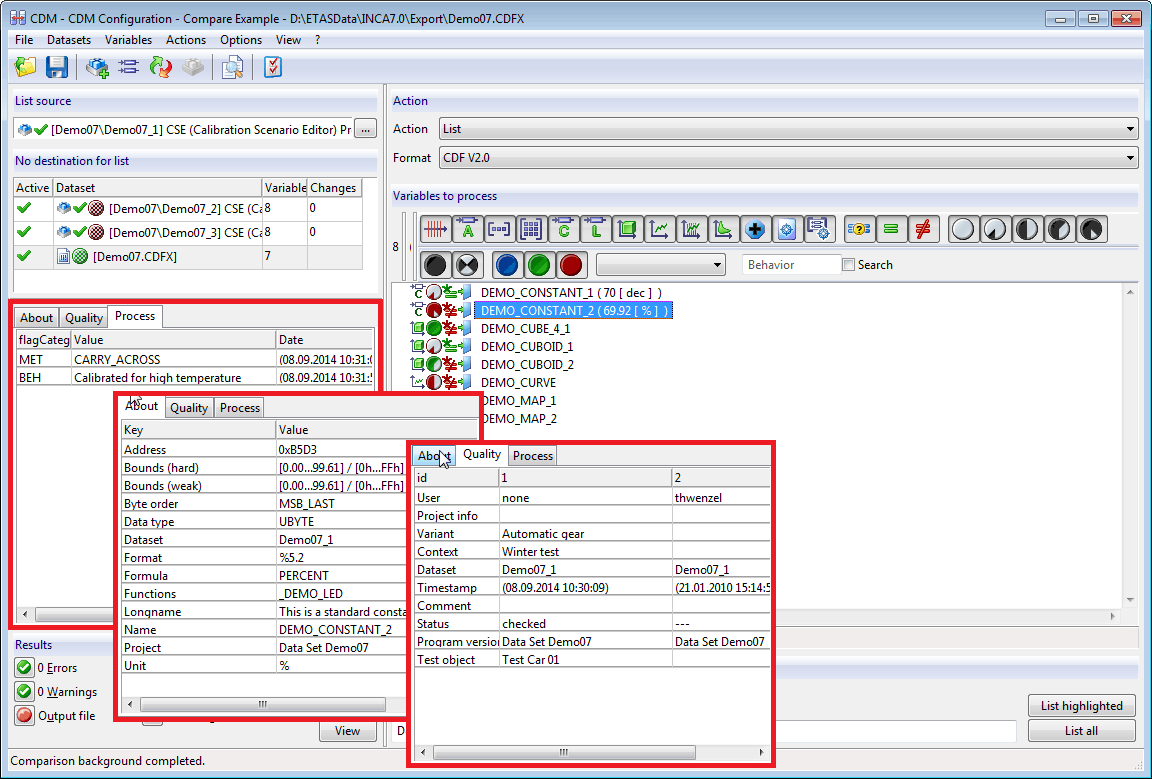Functions at a Glance
Reprogramming ECU flash memory using UDS on FlexRay
UDS on FlexRay extends the range of the flash protocols available thus far in INCA.
XCP V1.2 on CAN
Service Pack 3 supports the latest version of the XCP protocol. It allows data transfer rate limits to be set in order to limit bus and CPU loads as well as memory consumption.
Enhanced option for importing into INCA database browser

Export and import functions make it easy to exchange projects, workspaces, and experiment environments between different INCA databases. With Service Pack 3, users are able to control INCA’s import behavior. For example, they can define whether an existing database element should be overwritten or not. In addition, they can define whether artifacts should be imported to the root or to a specific database folder.
Performance improvements for eCDM interface
For exchanging calibration data between INCA and enterprise calibration data management tools such as CRETA, INCA provides the eCDM interface. By keeping calibration values out of the CDF files that are transferred in addition to the HEX files containing the calibration data, the latest version of the interface increases the exchange data rate by between 20% and 30%.
QM-BASIC: handling and filtering process metadata / specific data for maturity level

With Service Pack 3, the QM-BASIC add-on to INCA supports process metadata provided by CDF files. The metadata can be viewed, edited, and used as filter criteria by the Calibration Data Manager. Specific data for maturity levels are additional data concerning the maturity levels such as statistical information, comments, etc.
Emulation RAM segments of older ETKs automatically released
INCA automatically releases emulation RAM which is not required for storing calibration data any more in order to allow users to select other calibration labels for the experiment.